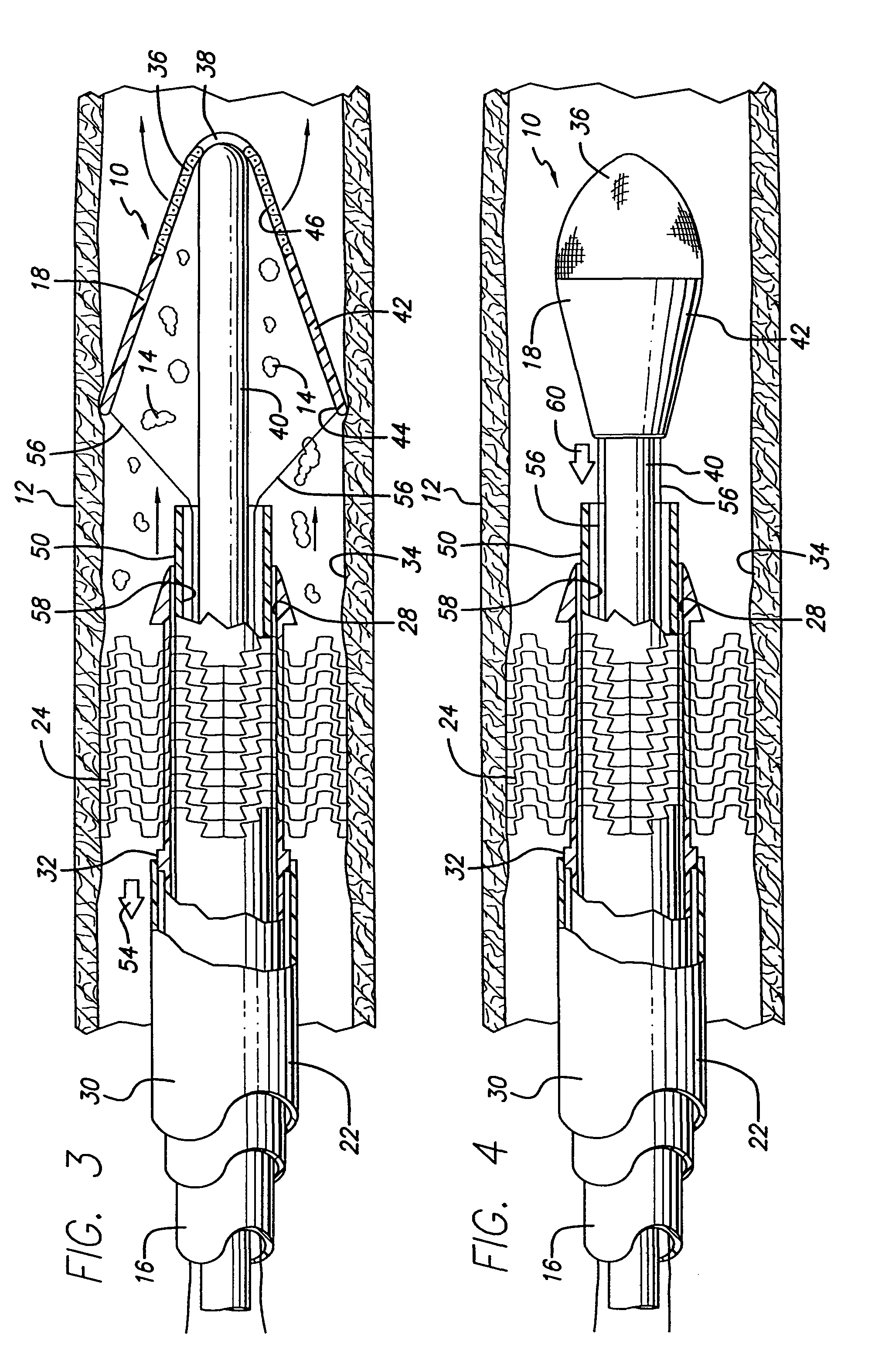Device for, and method of, blocking emboli in vessels such as blood arteries
a technology of emboli and vessels, applied in the field of devices and methods for blocking emboli in vessels such as blood arteries, can solve the problems of emboli trace release damage, trapped emboli to escape from the filter, and limited attempts to treat lesions in the carotid arteries, so as to prevent the backflow of trapped emboli into the vessel and the risk of losing any trapped emboli is small
- Summary
- Abstract
- Description
- Claims
- Application Information
AI Technical Summary
Benefits of technology
Problems solved by technology
Method used
Image
Examples
Embodiment Construction
[0017]A first preferred embodiment of a filtering device made in accordance with the present invention, generally indicated at 10, is shown in FIGS. 1-5 of the drawings. The filtering device 10 is adapted to be disposed in a blood vessel 12 to pass the blood in the vessel and block the passage of emboli 14 (FIG. 3) in the blood. The filtering device 10 includes a catheter portion 16 which is designed to deploy a filtering portion 18 in the vessel 12 to trap and remove emboli 14 from the vessel. The emboli 14 are produced when the vessel 12 is treated at the position of a lesion 20 during an intervention procedure such as, a balloon angioplasty procedure, a stenting procedure, an atherectomy procedure and the like. The present invention is designed to collect and remove such embolic debris from the artery to prevent the blockage of the smaller vessels downstream from the area of treatment. The system 10 is especially adapted to prevent blockage of small blood vessels leading to the b...
PUM
 Login to View More
Login to View More Abstract
Description
Claims
Application Information
 Login to View More
Login to View More - R&D
- Intellectual Property
- Life Sciences
- Materials
- Tech Scout
- Unparalleled Data Quality
- Higher Quality Content
- 60% Fewer Hallucinations
Browse by: Latest US Patents, China's latest patents, Technical Efficacy Thesaurus, Application Domain, Technology Topic, Popular Technical Reports.
© 2025 PatSnap. All rights reserved.Legal|Privacy policy|Modern Slavery Act Transparency Statement|Sitemap|About US| Contact US: help@patsnap.com



